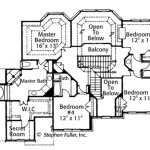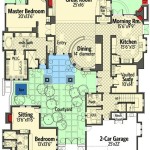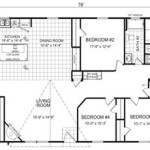Free Plans For Tiny House On Wheels: A Comprehensive Guide
The allure of tiny house living, characterized by its simplicity, affordability, and environmental consciousness, has surged in recent years. One particular variant, the tiny house on wheels (THOW), offers the added benefit of mobility, allowing owners to relocate their homes with relative ease. While construction involves costs, accessing free THOW plans can significantly reduce initial expenses, especially for budget-conscious individuals. This article explores the landscape of free THOW plans, outlining their availability, limitations, and essential considerations for those contemplating this route.
The internet hosts a diverse collection of free THOW plans, ranging from basic designs to more elaborate models. These plans are typically offered by various sources, including DIY enthusiasts, architectural students, and companies seeking to promote their products or services. The quality and completeness of these plans vary considerably, making careful evaluation crucial. It is important to remember that while these plans are free of charge, they may require modification or supplementation to meet specific needs and local building codes.
Navigating the world of free THOW plans requires diligence and a critical eye. Evaluating the plans based on structural integrity, compliance with building codes, and practicality for individual needs is essential before commencing any construction. Furthermore, understanding the limitations of free plans and the potential need for professional guidance is crucial for a successful and safe build.
Understanding the Landscape of Free Tiny House Plans
The availability of free THOW plans is often presented as an attractive option for individuals aiming to build their own tiny homes. However, the reality is more nuanced. These plans are frequently offered as introductory materials or marketing tools. While they may provide a general outline and basic dimensions, they may lack the detailed instructions, material lists, and engineering specifications necessary for a complete build.
Several types of free plans exist, each with its own characteristics. Some are simple, single-page sketches providing a basic floor plan. Others are more comprehensive, including multiple pages of drawings and some level of detail regarding framing, electrical, and plumbing systems. Still others are promotional tools, offering a limited portion of a complete plan and enticing users to purchase the full version.
The sources of these plans are diverse. DIY bloggers and website owners often create and share their simple designs as a way to attract readers and build their online presence. Architectural students sometimes offer their projects as part of their portfolios, though these may not always be fully vetted for practical construction. Companies that sell building materials or THOW components might offer incomplete plans to encourage the purchase of their products. Understanding the source of the plan can provide insights into its potential quality and completeness.
A common issue with free plans is the absence of crucial information. They frequently lack detailed material lists, precise measurements, and step-by-step instructions. This places a significant burden on the builder to fill in the gaps, requiring a considerable amount of construction knowledge and experience. Furthermore, free plans often fail to address regional building codes and regulations, which are essential for legal and safe construction.
Another potential pitfall is the lack of engineering specifications. THOWs are subject to unique stresses due to their mobile nature. Free plans may not address these stresses adequately, potentially leading to structural weaknesses. Similarly, electrical and plumbing systems require careful planning to ensure safety and compliance, and this level of detail is rarely found in freely available plans.
Key Considerations When Using Free Plans
Despite their limitations, free THOW plans can serve as a starting point for a DIY build. However, careful evaluation and supplementation are essential. Several key considerations must be addressed to mitigate the risks associated with using these plans.
The first and foremost consideration is structural integrity. THOWs are subjected to constant movement, vibration, and wind loads. Therefore, the structural design must be robust enough to withstand these forces. It is crucial to evaluate the framing plan, ensuring that it incorporates adequate bracing and support. If the plan lacks this information, consulting with a structural engineer is highly recommended.
Building code compliance is another critical aspect. Local building codes vary significantly, dictating requirements for insulation, ventilation, electrical wiring, and plumbing. Free plans often fail to address these codes, potentially leading to violations and safety hazards. Before commencing construction, it is essential to research local building codes and ensure that the plan meets these requirements. This may necessitate modifications to the original design.
Material selection is also a crucial consideration. Free plans often provide generic material lists, lacking specific details about the type, grade, and quantity of materials required. Choosing the right materials is essential for both structural integrity and durability. Researching appropriate materials for each component of the THOW is crucial, considering factors such as weight, weather resistance, and cost.
Practicality for individual needs should be addressed as well. Free plans are generic designs and may not perfectly align with individual lifestyles or requirements. Consider how the floor plan accommodates daily activities, storage needs, and accessibility. Modifying the plan to better suit personal needs is often necessary, but it requires careful planning to avoid compromising structural integrity or code compliance.
Finally, consider the tools and skills required for the build. Building a THOW is a complex project that demands a wide range of skills, from framing and carpentry to electrical and plumbing work. Evaluate your own skills and identify any areas where professional assistance may be needed. Investing in the necessary tools and learning the required skills is essential for a successful and safe build.
Supplementing Free Plans with Professional Guidance
Given the limitations of free THOW plans, seeking professional guidance is often a wise investment. A variety of professionals can provide valuable assistance, ensuring a safe, structurally sound, and code-compliant build.
Structural engineers can review the framing plan and provide recommendations for strengthening the structure to withstand the stresses of mobile living. They can also calculate load-bearing capacities and ensure that the design meets relevant engineering standards. Consulting with a structural engineer is particularly important if the free plan lacks detailed engineering specifications or if significant modifications are planned.
Architects can assist with modifying the floor plan to better suit individual needs while maintaining structural integrity and code compliance. They can also provide insights into space optimization, energy efficiency, and aesthetic design. While architects can be expensive, their expertise can significantly enhance the overall quality and livability of the THOW.
Experienced builders or carpenters can provide practical advice and guidance on the construction process. They can help interpret the plans, identify potential problem areas, and offer solutions for overcoming challenges. Hiring a builder for a consultation or for specific tasks, such as framing or electrical wiring, can be a worthwhile investment.
Building inspectors can provide valuable feedback on code compliance. They can review the plans and conduct inspections during the construction process to ensure that the THOW meets local building codes and safety standards. Engaging with building inspectors early in the process can help avoid costly mistakes and ensure a smooth permitting process.
Investing in professional guidance can significantly increase the chances of a successful THOW build. While free plans offer an appealing starting point, they should be viewed as a foundation for a more comprehensive plan that incorporates professional expertise and addresses individual needs and local regulations. The costs associated with professional guidance are often offset by the benefits of a safer, more durable, and code-compliant THOW.

Free Tumbleweed Diy Tiny House Plans Houses

Tiny House Floor Plans 32 Home On Wheels Design

Elegant Tiny House Plans On Wheels Free 4 Conclusion Trailer Floor

Free Preview Of 101 Tiny House Designs Book By Michael Jaen

27 Adorable Free Tiny House Floor Plans Craft Mart

27 Adorable Free Tiny House Floor Plans

27 Adorable Free Tiny House Floor Plans Trailer Small

Quartz Tiny House Free Plans Ana White

Tiny Free House Pallet Design On Wheels Micro Plans Diy

The Small House Project Tiny Blog








